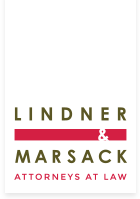By: Alan M. Levy
Long-awaited final rules for providing investment advice to participants and beneficiaries of 401(k) plans and other retirement programs which utilize participant-directed individual accounts were issued by the U.S. Department of Labor (“DOL”) on October 25, 2011. They will be effective December 27, 2011.
A by-product of defined contribution plans supplanting defined benefit plans has been minimization of plan sponsors’ potential fiduciary liability by authorizing plan participants to make their own investment decisions through self-directed individual accounts. As this change evolved, many plan sponsors and fiduciaries arranged for investment advisers to assist their plan participants in making these decisions, often using experts who were themselves employed by some kind of investment management or securities sales enterprise. In 2006, recognizing a possible conflict of interest in these arrangements, Congress, in the Pension Protection Act (“PPA”), defined allowable parameters for this type of plan activity.
Anyone who controls a plan asset is a fiduciary of that plan. The administrator of a defined contribution plan who manages the investment of assets for those participants who decline to make their own investment directions is subject to fiduciary liability for the prudence and reasonableness of those investment choices. If the fiduciary retains an investment expert who manages the undirected accounts and/or advises participants as to their individual investments, the choice of that expert is also subject to fiduciary liability. And to the extent the expert may have the authority to direct decisions as to the investment of any fund assets in a general “default account” or individual accounts, that expert is also subject to fiduciary duties and liabilities.
The PPA, and the DOL regulations implementing it, now provide an exemption from any claims of prohibited transactions (typically cases involving a fiduciary who may gain some fee, profit, or advantage from a transaction involving plan assets) for the use of investment advisers in the following circumstances:
- The investment adviser must use (a) a “fee-leveling” compensation system by which he/she receives the same fee no matter what choice of investment is made. The adviser cannot receive a larger payment, such as a commission dependant on the dollar amount of the transaction, if he/she convinces the participant to select one investment choice over another. In the alternative, the adviser must use (b) a computer model system for providing advice or managing assets.
- The fee-leveling system’s “advice must be based on generally accepted investment theories that take into account historic returns of different asset classes over defined periods of time, but also notes [other] generally accepted investment theories including investment management and other fees and expenses attendant to the recommended investments.” The adviser must also consider “information related to age, time horizons (e.g., life expectancy, retirement age), risk tolerance, current investments, other assets or sources of income, and investment preferences of the participant or beneficiary.” 29 CFR Vol. 76, No. 206, 10/25/11, p. 66138, Pt. 2550, RIN 1210-AB35. In turn, the adviser must request this information from the employer and the participant. Use of a computer model system must take into account similar data and investment theories.
- The adviser must be certified pursuant to requirements stated in the DOL regulations.
- An independent audit must be conducted annually to assure compliance with these structural requirements, and the adviser must provide a copy of the audit to the plan fiduciary. “Selection of the auditor is a fiduciary act,” Id., 66147, for which the fiduciary is responsible.
- A number of disclosures must be provided by the adviser to the participants, “written in a clear and conspicuous manner – calculated to be understood by an average plan participant and must be sufficiently accurate and comprehensive .” Id. This may be done by written or electronic communication. Similar information must be provided by the adviser to the plan fiduciary.
- The “arrangement pursuant to which investment advice is provided must be expressly authorized by a plan fiduciary.” Id., 66144.
While the retention of the adviser pursuant to these provisions will exempt the fiduciary from any charge of a prohibited transaction, the plan sponsor or fiduciary will have a fiduciary liability for any failure to monitor the adviser’s selection of the adviser and his/her subsequent activities. “[I]ntentional, regular, deliberate practices involving more than isolated events or individuals, or institutionalized practices will almost always constitute a pattern or practice” for which a fiduciary may be held personally liable.
As a general matter, self-directed accounts for employees/participants should limit potential liability for plan sponsors, administrators, and fiduciaries. Use of a certified investment adviser to assist participants in the investment of the assets in their accounts will strengthen these limits, but the appropriate selection and monitoring of the adviser to assure his/her compliance with these rules is essential to preserving that protection.
This is a new and broad-sweeping regulation, and it will inevitably be challenged, clarified, and refined as it is implemented by DOL. Investment advisers will have to comply with the rule, and plan fiduciaries will have to make sure they do so. The prohibited transaction exemptions here will be nullified by any “pattern or practice” of noncompliance.
If you have any questions about the application or implementation of this Regulation, please contact Alan Levy, here at Lindner & Marsack, S.C., for further explanation and assistance.
